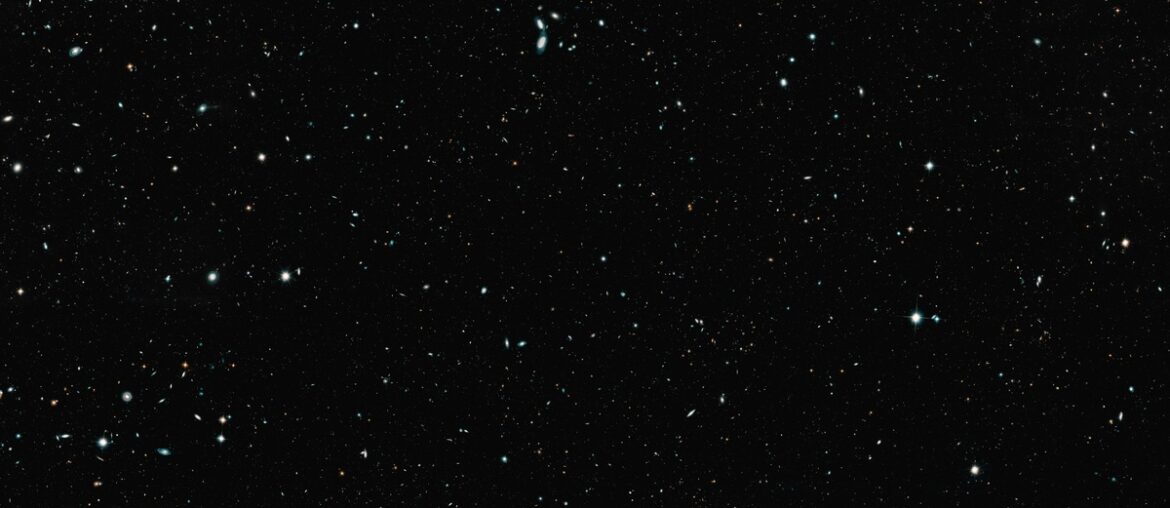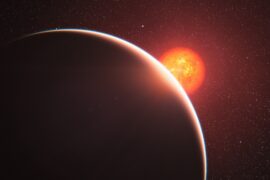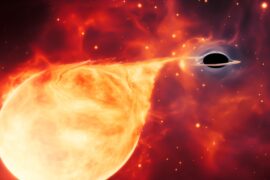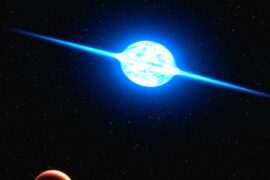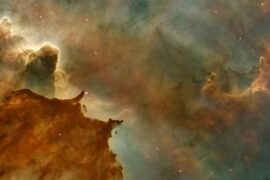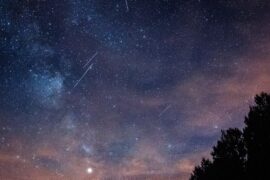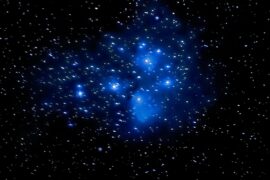Hubble’s deep-field programs and targeted observations have revealed a surprising diversity of distant galaxies, giving astronomers concrete targets for studying the early universe. From cluster-lensed objects to faint dropouts in ultra-deep fields, these discoveries map how structure and light emerged over cosmic time.
There are 15 Galaxies Discovered by the Hubble, ranging from A1689-zD1 to UDFy-38135539; details are organized as Discovery year, Redshift (z), Discovery source / Notable reason — you’ll find below.
How did Hubble actually identify these distant galaxies?
Hubble combines long exposures, specific filter choices, and sometimes gravitational lensing to pick out faint, high-redshift candidates by their colors and dropout signatures; follow-up spectroscopy or deeper imaging then confirms redshift and properties, which is why the table notes both discovery source and redshift.
Why are entries like A1689-zD1 and UDFy-38135539 highlighted?
Objects such as A1689-zD1 and UDFy-38135539 represent different discovery paths—one found via lensing by a galaxy cluster, another in an ultra-deep field—so listing both shows the range of methods and redshifts covered in the compilation you’ll find below.
Galaxies Discovered by the Hubble
| Name | Discovery year | Redshift (z) | Discovery source / Notable reason |
|---|---|---|---|
| GN-z11 | 2016 | 11.09 | CANDELS survey; was the most distant galaxy known for several years. |
| MACS0647-JD | 2012 | 10.70 | CLASH survey; an extremely distant galaxy seen three times due to lensing. |
| UDFy-38135539 | 2009 | 8.55 | Hubble Ultra-Deep Field; among the first galaxies seen in the reionization epoch. |
| A1689-zD1 | 2008 | 7.60 | Gravitational lensing by Abell 1689; a very young and dusty galaxy. |
| SPT0615-JD | 2017 | 9.90 | RELICS survey; a lensed “tadpole” galaxy from the early universe. |
| NGC 1052-DF2 | 2018 | 0.006 | HST distance measurement; a bizarre galaxy with virtually no dark matter. |
| NGC 1052-DF4 | 2019 | 0.006 | HST confirmation; a second nearby galaxy found to be missing dark matter. |
| M60-UCD1 | 2013 | 0.003 | HST imaging; densest galaxy known, with a monster black hole. |
| SN Refsdal Host | 2014 | 1.49 | Gravitational lensing; hosted the first multiply-imaged, time-delayed supernova. |
| Sunrise Arc | 2022 | 6.20 | Gravitational lensing survey; host galaxy of Earendel, the most distant star ever seen. |
| MACS J1149-JD1 | 2012 | 9.60 | CLASH and BoRG surveys; one of the most distant protogalaxies confirmed at the time. |
| Cosmic Snake Arc | 2017 | 1.04 | Gravitational lensing by MACS J1206; a remarkably detailed lensed spiral galaxy. |
| POX 52 | 2004 | 0.02 | HST spectroscopy; confirmed a dwarf galaxy with an active black hole. |
| Abell 2744_Y1 | 2014 | 8.00 | Hubble Frontier Fields; an early candidate for the most distant galaxy. |
| Hubble Deep Field Galaxies | 1995 | Varies | Hubble Deep Field; revealed thousands of previously unknown, distant galaxies. |
Images and Descriptions
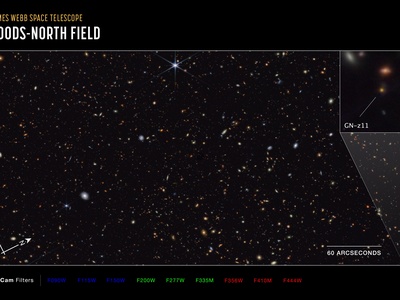
GN-z11
A spectacularly distant galaxy, GN-z11 was Hubble’s record-holder for the farthest object ever seen. Its light traveled for over 13.4 billion years, giving us a peek at the universe when it was just 400 million years old, a mere 3% of its current age.
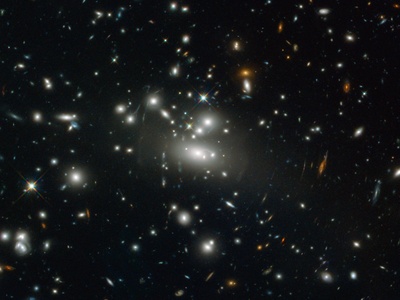
MACS0647-JD
This tiny, faraway galaxy is so distant its light is magnified by the gravity of a massive galaxy cluster in front of it. Hubble saw three separate images of the same galaxy, a cosmic mirage that helped astronomers study the very early stages of galaxy formation.
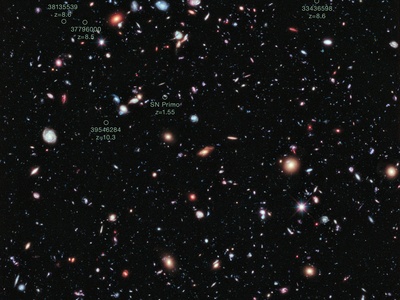
UDFy-38135539
Found within the iconic Hubble Ultra-Deep Field, this galaxy was one of the first confirmed to exist during the “epoch of reionization.” Its light helped clear the cosmic fog that filled the early universe, making it transparent to starlight.
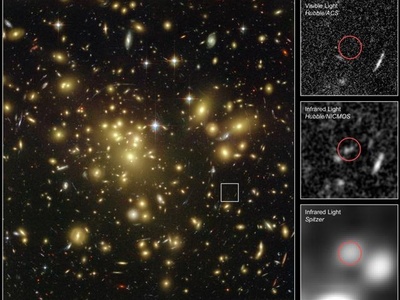
A1689-zD1
This galaxy’s light was magnified over nine times by the gravity of the Abell 1689 cluster, allowing Hubble to spot it. It revealed that even very early galaxies, seen just 700 million years after the Big Bang, could be surprisingly dusty and mature.
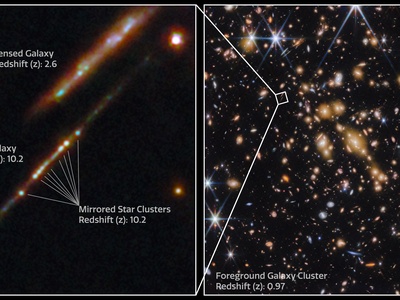
SPT0615-JD
Nicknamed the “Tadpole,” this galaxy’s stretched-out appearance is a result of gravitational lensing. Discovered in the RELICS survey, it provides a magnified view of a typical galaxy from when the universe was just 500 million years old, offering clues about early star formation.
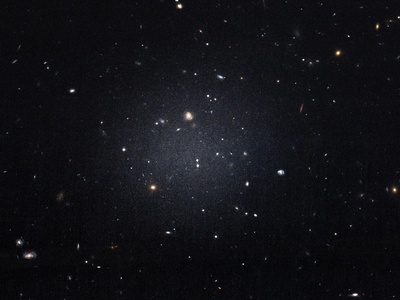
NGC 1052-DF2
This ghostly, see-through galaxy stunned astronomers. Hubble’s precise measurements revealed it contains almost no dark matter, the invisible substance thought to be the scaffold for all galaxies. Its existence challenges our fundamental understanding of how galaxies form and evolve.
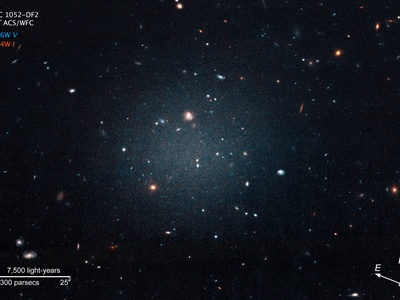
NGC 1052-DF4
A cosmic sibling to NGC 1052-DF2, this ultra-diffuse galaxy provided more evidence that galaxies can exist without dark matter. Hubble’s observations confirmed its strange nature, deepening the mystery and forcing scientists to rethink their theories about galaxy formation.
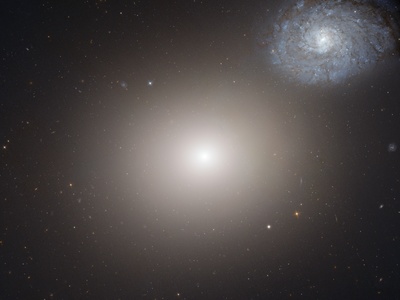
M60-UCD1
M60-UCD1 is an ultracompact dwarf galaxy, one of the densest known in the universe. Hubble’s observations revealed that this tiny remnant of a larger galaxy contains a supermassive black hole that makes up a stunning 15% of its total mass.

SN Refsdal Host
This distant spiral galaxy became famous not for what it is, but for what it hosted. It’s the home of “SN Refsdal,” a supernova whose light was split by gravity into multiple images that arrived on Earth months and years apart, just as predicted by Einstein.
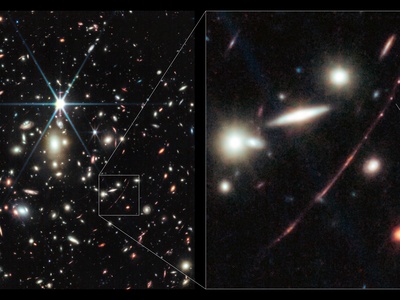
Sunrise Arc
While exploring this distant galaxy, gravitationally lensed into a long arc, Hubble astronomers spotted a single star, Earendel. The galaxy itself provides a beautiful example of how cosmic telescopes can reveal details that would otherwise be impossible to see in the early universe.

MACS J1149-JD1
Discovered using combined power from Hubble and Spitzer, this galaxy pushed the boundaries of cosmic exploration. It existed when the universe was less than 500 million years old, providing a vital data point for understanding how the very first stars and galaxies formed.
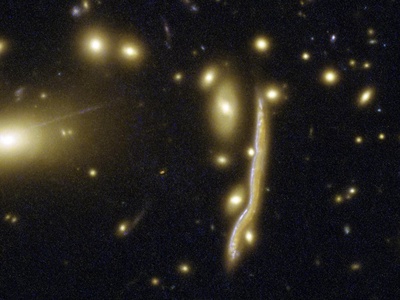
Cosmic Snake Arc
This galaxy is nicknamed the “Cosmic Snake” because gravitational lensing has stretched its image into a long, winding arc. Hubble’s detailed view reveals individual star-forming clumps within the spiral arms of a galaxy whose light has traveled for nearly 8 billion years to reach us.

POX 52
Originally mistaken for a star in our own galaxy, Hubble’s keen eye revealed POX 52 is actually a compact dwarf galaxy with an active supermassive black hole at its center. This discovery suggested that even the smallest galaxies can host powerful central engines.
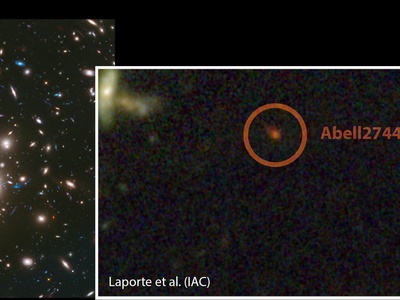
Abell 2744_Y1
Found in the Hubble Frontier Fields survey of the galaxy cluster Abell 2744, this faint smudge was a candidate for the most distant galaxy known at the time. It represents the type of faint, early galaxy that Hubble was specifically designed to find and study.
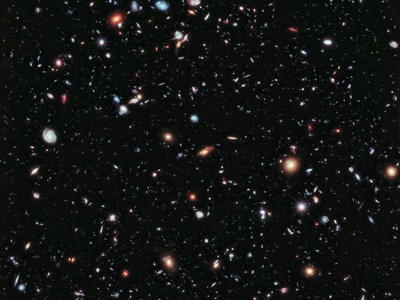
Hubble Deep Field Galaxies
Rather than one galaxy, this was a landmark discovery of nearly 3,000 of them in a tiny, empty patch of sky. This “core sample” of the universe, taken over 10 days, proved that distant, young galaxies were plentiful and came in a variety of strange shapes.
Enjoyed this article?
Get daily 10-minute PDFs about astronomy to read before bed!
Sign up for our upcoming micro-learning service where you will learn something new about space and beyond every day while winding down.

